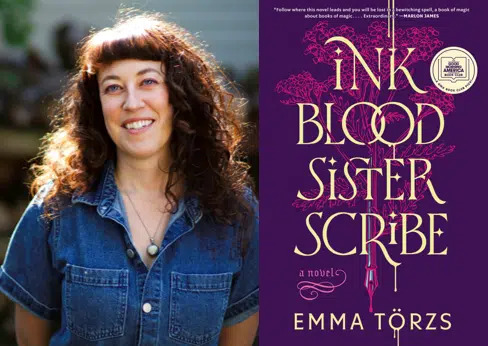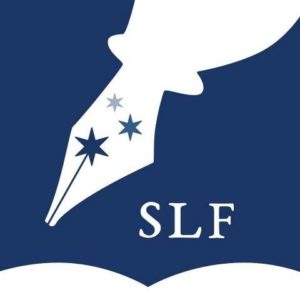(1) STAR TREK WINS PEABODY AWARD. The Star Trek franchise was among the Peabody Award winners announced today. Given to television, radio, and other media, the Peabody honors “stories that powerfully reflect the pressing social issues and the vibrant emerging voices of our day.”

TrekMovie.com homes in on the story of greatest interest to fans: “Star Trek Franchise Wins Peabody Award” –
… This is actually Trek’s second Peabody. In 1987 the Next Generation episode “The Big Goodbye” won the Entertainment, Children’s & Youth Award. The first season of Star Trek: Discovery was also nominated for the same award.
Here is the full text of the announcement for Star Trek…
The Institutional Award – Star Trek
The original Star Trek television series aired on NBC for only three seasons, from September 1966 to June 1969. It was fresh, prescient, and so ahead of its time that it couldn’t quite capture the mainstream audience required for hits during a particularly insipid time in television. But fast forward nearly 60 years, and creator Gene Roddenberry’s vision is alive and well, having spawned a media franchise of 13 feature films, 11 television series, and numerous books and comics, with a legendary fan following. Today Star Trek is more vibrant, imaginative, funny, entertaining, and progressive than ever. And these days, we’ve got the special effects to make it look stellar.
The original science-fiction series was set aboard a starship, Enterprise, whose mostly human crew encountered alien life as they traversed the stars, led by the iconic Captain James T. Kirk (William Shatner). It was groundbreaking for its diverse cast and for its unapologetically progressive values—exploration over colonialism, cooperation over violence. Its fandom grew over time, and the successors to the original series have updated the franchise without losing its moral core—the dream of a future free from human destruction, poverty, and bigotry. Subsequent captains have served as models of ethical and diverse leadership: The Next Generation’s Jean-Luc Picard (Patrick Stewart), Deep Space Nine’s Benjamin Sisko (Avery Brooks), and Voyager’s Kathryn Janeway (Kate Mulgrew) among them.
With every passing decade, new versions have proliferated, attracting new generations of fans. Film reboots directed by J.J. Abrams and Justin Lin revived Kirk and his crew with new, young actors, zippier dialogue, and vastly improved effects in the 2000s and 2010s. The Streaming Era has brought a raft of reimaginings with a variety of sensibilities, from the dark and complicated Star Trek: Discovery to the crowd-pleasing prequel Star Trek: Strange New Worlds (featuring a young Spock!) to the hilariously meta cartoon Star Trek: Lower Decks. As the latest versions of Star Trek invite in a new generation of viewers, the interstellar travelers still encounter danger and difficulty, of course. But the Starfleet crew always comes out on top— and without sacrificing essential values that seem quintessentially human: valor, self-sacrifice, curiosity, compassion, broadmindedness.
“From a groundbreaking television series to an expansive collection of films, novels, comic books and so much more, Star Trek has been delivering joy, wonder, and thought-provoking stories since the 1960s,” said Jones. “With powerful anti-war and anti-discrimination messages, it has blazed trails for all science fiction franchises while winning over passionate fans across the globe. We’re proud to honor Star Trek with Peabody’s Institutional Award.”
The Hollywood Reporter has the complete list of Peabody Awards 2024 Winners.
Other winners of genre interest are:
CHILDREN’S/YOUTH
Bluey (Disney+)
Creator Joe Brumm’s endearing family of animated Australian dogs have captivated both children and adults for years in episodes equally delightful and heartrending. Very little feels off the table, as Bluey fearlessly tackles topics from death to infertility to fleeting friendships, all while maintaining a sense of innocence and exuberance for the children, and affinity and understanding for the parents, who are allowed to be dynamic, imperfect beings on their own growth journey.
Ludo Studio, Australian Broadcasting Corporation, BBC StudiosENTERTAINMENT
The Last of Us (HBO | Max)
In HBO’s post-apocalyptic The Last of Us, a faithful adaptation of the critically-acclaimed Naughty Dog video game, the road trip odyssey of Joel and Ellie (played by Pedro Pascal and Bella Ramsey) functions as a recursive meditation on love and loss—and how love is capable of changing people, for good and for ill. In the hands of showrunner Craig Mazin, who worked in collaboration with Neil Druckmann, a co-director on the original game, this adaptation extracts new layers from the text that expand its meaning—imagining what a life of love and fulfillment, and survival, can look like at the end of the world.
HBO in association with Sony Pictures Television Studios, PlayStation Productions, Word Games, The Mighty Mint, and Naughty Dog.
(2) MINNESOTA BOOK AWARDS. The Friends of the Saint Paul Public Library announced the Minnesota Book Awards winners. The complete list is at the link.
Emma Törzs’ fantasy novel Ink Blood Sister Scribe is the winner of the Genre Fiction category.

For generations, the Kalotay family has guarded a collection of ancient and rare books. Books that let a person walk through walls or manipulate the elements—books of magic that half-sisters Joanna and Esther have been raised to revere and protect.
All magic comes with a price, though, and for years the sisters have been separated. Esther has fled to a remote base in Antarctica to escape the fate that killed her own mother, and Joanna’s isolated herself in their family home in Vermont, devoting her life to the study of these cherished volumes. But after their father dies suddenly while reading a book Joanna has never seen before, the sisters must reunite to preserve their family legacy. In the process, they’ll uncover a world of magic far bigger and more dangerous than they ever imagined, and all the secrets their parents kept hidden; secrets that span centuries, continents, and even other libraries . . .
(3) OUT OF TIME. Jonathan Russell Clark analyzes “Why We Love Time Travel Stories” for Esquire.
…For Wells’s contemporaries, Gleick notes, “technology had a special persuasive power.” For us, now a quarter of the way through the 21st century, things have grown complicated. Technology governs everything we do, but rather than enhancing our lives, our gadgets seem to exploit us, isolate us, box us in. Moreover, the technology itself has moved beyond our understanding, leaving us dependent on the two or three corporate entities producing it. The World of Tomorrow never arrived; no matter how much technology has progressed, it is still frustratingly Today.
Instead of holding out for a future that will solve our problems, contemporary readers now look into the past to address the wrongs inflicted on the less powerful, so what makes a convincing time-travel story in the 21st century isn’t the verisimilitude of the science but rather the morality of the characters’ intentions. In her book on ’80s movies, Life Moves Pretty Fast, Hadley Freeman notes that in Back to the Future, “Marty’s meddling in the past results in his parents living in a nice house, with chicer furnishings, posher breakfast dishes, and even domestic help in the form of Biff Tannen in 1985. Marty’s triumph is to lift his family up to middle-class status.” If Hollywood rebooted the franchise today, Freeman writes, “Marty’s challenge would be to save the world.” I still think a remake would keep Marty’s adventures confined to his personal bubble; it’s just that instead of reuniting his parents to ensure his existence, his mission would instruct him to meddle in his parents’ past because, down the line, this will save the world. Nowadays, to exploit time travel for personal gain—and indeed to tell a story in which such actions are uncritically celebrated—is unacceptable, as is returning to our discriminatory, segregated, slavery-filled history without seriously grappling with those realities. It’s no longer technology but rather moral conviction that now has a special persuasive power on us….
(4) A RARE HEINLEIN CONNECTION. Dave Hook has done fascinating research into a forgotten Heinlein collaborator: “Who is Elma ‘Miller’ Wentz?”
I know I’ve read this story in “Beyond the End of Time” at least once, but I remember nothing about it or even that it existed until seeing this. I found this very interesting for several reasons:
- To my knowledge, this is the only fiction published by Heinlein with a co-author during his lifetime.
- Heinlein clearly was not fond of it, as he never allowed this and two of his other early stories published as by “Lyle Monroe” to be reissued in a Heinlein collection during his lifetime (per Wikipedia).
- I had no idea who “Elma Wentz” was.
…Sometime in the early 1930s, she moved to Los Angeles. Her family did also, although it’s not clear if they moved at the same time or not.
William H. Patterson, Jr.’s “Robert A. Heinlein: In Dialogue with His Century: Volume 1: 1907-1948: Learning Curve” (“Robert A. Heinlein: In Dialogue…”), 2010 Tor, noted that Elma was working for Upton Sinclair on Sinclair’s California 1934 governor’s campaign as his personal secretary. Patterson also notes that she and her husband to be, Roby Wentz, met Robert A. Heinlein when Heinlein joined Sinclair’s related “End Poverty in California” (EPIC) movement in early 1935. The EPIC movement overlapped substantially with Sinclair’s run for governor. This resulted in her and Roby becomes friends with Robert A. Heinlein and his first wife Leslyn (MacDonald) Heinlein, and with journalist (and future SF writer) Cleve Cartmill….
(5) GUARDIAN REVIEW ROUNDUP. Lisa Tuttle’s “The best recent science fiction, fantasy and horror – reviews roundup” for the Guardian encompasses The Other Valley by Scott Alexander Howard; A View from the Stars by Cixin Liu; Flowers from the Void by Gianni Washington; The Dark Side of the Sky by Francesco Dimitri; The Hungry Dark by Jen Williams; and To the Stars and Back by various writers.
(6) VANISHING POINT. Atlas Obscura advises “Don’t Stare at the Dark Watchers”.
… There are dozens of similar accounts of so-called dark watchers by hikers in the Santa Lucia Mountains near Big Sur, California. The stories often share details: The figure stands seven to 10 feet tall and has a walking stick and hat, for example. No one has ever been able to interact with the looming figures—they always disappear once the hiker acknowledges them…
…Despite their ephemeral nature—and claims that they only appear to hikers with low-tech, old-school gear—stories of these cryptids go back hundreds if not thousands of years. Some people trace the legend to the pre-colonial oral stories of the Chumash, Indigenous peoples that have lived along the Central Coast of California and the Channel Islands for 13,000 years. But while there are many Chumash accounts of various creatures in December’s Child by Thomas Blackburn—the most complete written record of Chumash stories—it’s unclear whether any describe the dark watchers.
“These entities—whatever they are—have not just influenced the local people,” says Offutt. “They influenced some pretty famous people, too.” The earliest written accounts of dark watchers go back to the 1700s, when Spanish colonists gave the mysterious beings their name: los vigilantes oscuros. Since then, sightings have continued, and in 1937, the creatures made their literary debut….
(7) TODAY’S BIRTHDAY.
[Written by Cat Eldridge.]
Born May 10, 1969 — John Scalzi, 55. This is not full accounting of everything that the rather prolific John Scalzi has done, nor is it limited to his fiction. Now that I’ve got that out of the way let’s start…
I was trying to remember what I first read by him and I think it was actually Old Man’s War whereas I expect you know the characters of Old Man’s War are senior citizens who leave Earth to have their brains transplanted into cyborg bodies and sent off to be fight in an interstellar war. Scalzi has said the series was in homage in Heinlein’s Starship Troopers.

I only read further in the series through the “Questions for a Soldier” short story, The Ghost Brigades and the Zoe’s Tale. The latter broke my heart really it. Damn, I so like the main character here, and spoiler alert, what happened to her really did severely distressed me. Effing hell.
So who here has read and liked The Android’s Dream novels? I liked everything I read by Scalzi save this. Maybe it was the premise itself, maybe the weirdness of the sheep hybrid which I’ll not discuss lest somebody be here who’s keen to read it still, maybe there there was too much Philip K. Dick in it. Whatever it was, I didn’t like it. So tell me why I should have.
Space opera, I knew he had it in him. And the Interdependency series certainly proved that amply. Lovely premise of an Empire, spoiler alert again so go drink Romulan blood wine, as the portals connecting the worlds of their Empire are apparently collapsing. The titles of the final novel in the trilogy sums up the trilogy up nicely, The Last Emperox.
And then there’s the Hugo winning Redshirts. Obviously off the Trek’s infamous oh my he’s a red shirt and will die a horrible death meme, it allowed Scalzi to play around with that delicious premise. No, I’m not saying a word more, so no spoiler alert needed. It’s a great story told well. There’s even something that Scalzi might well have borrowed from the Clue film here.
The last novel I want to talk about involves Fuzzies. Fuzzy Nation, authorized by the estate of H. Beam Piper, was not intended to be a sequel to Little Fuzzy, the Piper novel which was nominated for a Hugo. Scalzi wrote it first and then got permission from the Estate to publish it. It doesn’t feel like something the Piper would have written, but it’s worth reading none the less.
Now let’s note Whatever, no doubt the most entertaining blog done by any writer, genre or otherwise. Is this what he won a Fan Writer Hugo for? If so, great choice. It’s something I very much look forward to reading every day. I see his Hugo for Best Related Book was related to his blog, Your Hate Mail Will Be Graded: A Decade of Whatever 1998–2008.
Ok, that’s what I like by him. No, it’s not everything but I did say it would be. As always, I know you’ll give copious comments about what I didn’t mention.
(8) COMICS SECTION.
- Off the Mark’s lines up the usual suspects.
- Shoe lets the name speak for itself.
- Speed Bump disappoints these readers.
- Carpe Diem has an unexpected haunting.
- Nathan W Pyle shows a character resisting inimical forces!
(9) A VICIOUS GANG OF FACTS. Those skeptics at ScreenRant pooh-pooh “8 Sci-Fi Movie Inventions Ruined By Real Science”. First on their list of impossibilities:
8. Lightsabers
The Star Wars Series
One of the most iconic movie weapons ever created, lightsabers need little introduction. The mythical weapons of both the legendary Jedi order and the insidious Sith, these blazing hot swords of pure light can slice through nearly anything in the Star Wars universe, barring specialty-made materials like Durasteel. Not only that, but they’re also capable of deflecting bolts from energy-based blaster weapons, making them an impressive source of offense as well as defense. In the lore of the franchise, the lightsabers are powered by the mysterious Kyber crystals.
The lightsabers operate on different laws of physics than those in reality. Creating a powerful enough beam of light to cut through solid metal would result in a much longer, unwieldy weapon, not limited in its projection to a mere three feet. Even ignoring the issues regarding the lightsabers’ power source, which would easily need to be connected to some kind of power-generating backpack with today’s available technology, the ability of the weapons to physically clash with one another disobeys the properties of light. In reality, crossing lightsabers would simply pass through one another.
(10) BEWARE DOCTOR WHO SPOILER. Is it really? I don’t know, so better safe etc. “Doctor Who’ Star Ncuti Gatwa Filmed With 20 Babies in Season Premiere”.
While filming episode one of “Doctor Who” season 14, entitled “Space Babies,” Millie Gibson had to do the impossible: keep the attention of 20 infants at once. Although she was bearing her soul in a speech integral to her character’s backstory, the babies kept dozing off and losing their attention to the flashing lights of the space-age set. So, to keep their little eyes focused on her, she delivered her lines while a nursery rhyme played on her phone just out of camera view.
“It was so hard honestly,” recalled Gibson. “It was the most bizarre thing but it will stay in my mind forever.”
…“They were such divas,” Gatwa joked about his toddler co-stars. “They had so many demands.”…
(11) FLAME ON! I don’t know how this cooking news item ended up at Popular Mechanics: “’Star Wars’ Fans, Truff’s Latest Super-Spicy Hot Sauce Is for You”.
…That’s right: Truff—the brand behind the decadent truffle-infused hot sauces Oprah has named to her Favorite Things list for the last three years—just dropped a new hot sauce with some serious Star Wars flair. Truff’s Star Wars Dark Side Hot Sauce is nothing to play with, given it’s now the brand’s spiciest sauce, featuring the hot-as-Hades ghost pepper.
Yes, the ghost pepper is certainly quite hot, topping out at over 1 million Scoville Units. That said, it isn’t the hottest. That title only recently belongs to Pepper X, which reaches more than double the ghost pepper’s 1+ million Scoville Units. According to Britannica, though, less than 20 years ago, the ghost pepper actually was the fieriest, most fearsome of them all. But just because there’s one hotter out there now doesn’t mean ghost peppers aren’t still fierce, as you’ll find out when you crack open this hot sauce….

(12) MONSOON Q&A. A BBC interview: “Doctor Who star Jinkx Monsoon on playing ‘zany’ villain Maestro”.
… American drag queen Jinkx Monsoon, who plays the new nemesis, tells BBC Newsbeat her “dreams have been granted in a wonderful way”.
Jinkx is known as the “Queen of Queens” after winning a regular and All Star season of RuPaul’s Drag Race.
And she says moving to the world’s longest-running science fiction show felt like a natural progression for a self-described trans queer actor.
“Sci-fi has always been queer. Anyone who tells you otherwise is delusional,” she says.
“There are prominent writers, directors, producers who are queer in these fields. And it just hasn’t really been able to be talked about and a lot of them nowadays are done being silent.”
She adds there has been “so much queer progress” in society, but feels in the entertainment industry “there’s still been this thing of queer people behind the cameras”.
“And only certain palatable society-approved queer people get to be in front of the camera.
“What I really love about this Doctor Who season is it saying: ‘To hell with that’.”
(13) HOLY SH!T! Aka the video of the day — Hell and Back by Scott Base. A short film based on original Bad Space comic. Mark sent the link with a warning, “I’m not sure I’d want to see a whole movie…”
[Thanks to Cat Eldridge, SF Concatenation’s Jonathan Cowie, Steven French, Lise Andreasen, Mark Roth-Whitworth, Michael J. Walsh, Teddy Harvia, Kathy Sullivan, Mike Kennedy, Andrew Porter, John King Tarpinian, and Chris Barkley for some of these stories. Title credit belongs to File 770 contributing editor of the day Brian Z.]



